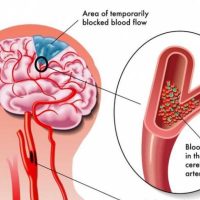Alcoholic liver disease refers to a range of conditions and associated symptoms that develop when the liver becomes damaged due to alcohol misuse.
Harmful drinking
Harmful drinking means drinking alcohol at levels that lead to significant harm to physical and mental health and that may cause substantial harm to others. Examples of harm include liver damage or cirrhosis, dependence on alcohol and substantial stress or aggression in the family.
Alcohol consumption can be measured by standard drinks. A standard drink is 1 can of beer, 1 glass of wine, or 1 mixed drink.
Women who regularly drink more than 3 drinks at one time or more than 7 drinks a week and men who regularly drink more than 4 drinks at one time or more than 14 drinks a week are at the highest risk of alcohol-related harm.
Women who drink heavily during pregnancy, put their baby at risk of developing fetal alcohol syndrome or fetal alcohol spectrum disorder. These disorders lead to lifelong intellectual and behavioral problems for the child.
Alcoholic liver disease is progressive
Fatty Change
A progressive illness, alcoholic liver disease first appears as a fatty change in the liver. Also known as steatosis or fatty liver disease, this accumulation of fat in liver cells can be seen through a microscope as large, fatty globules. In addition to alcoholism, these large globules can also be caused by diabetes, obesity, and starvation.
Alcoholic Hepatitis
Some people are more prone to alcoholic hepatitis, or acute hepatitis, than others. Also known as alcoholic steatonecrosis, alcoholic hepatitis is an inflammatory reaction to the fatty change in liver cells. Health experts speculate that this inflammatory condition lays the groundwork for the development of fibrosis.
Liver Fibrosis
While not normally accompanied by symptoms, liver fibrosis can develop into cirrhosis as it progresses. The fibrosis – also known as scar tissue – alters the very fabric of the liver to such an extent that liver functioning is seriously impaired.
Cirrhosis
Often referred to as end-stage liver disease, cirrhosis is characterized by replacement of liver tissue with fibrotic scar tissue and regenerative nodules, and permanent, non-reversible damage to the liver.
Cirrhosis is a condition whereby the liver is so extensively damaged that it may no longer function, which can result in death. In its advanced stages, the only option for cirrhosis is liver transplantation.
Symptoms of cirrhosis include, but are not limited to, changes to the nails and palms; strong, sweet-smelling breath; dark urine; jaundice (yellowing of the skin, eye, and mucus membranes); an increase in male breast tissue; impotence, infertility, or loss of sexual drive due reduced hormone secretion from the testes or ovaries; ascites; change in liver size; weight loss; weakness and fatigue; and anorexia.
But it’s hard to predict which drinkers will develop cirrhosis. Some people who drink huge amounts never get cirrhosis, and some who don’t drink very much do get it. For some unknown reason, women seem to be especially vulnerable.
Fixable or Not-Fixable?
While fatty change and alcoholic hepatitis are considered reversible, the later stages of fibrosis and cirrhosis tend to be irreversible, but can sometimes be managed for long periods of time.
Malnutrition contributes to liver disease and is therefore a serious concern. It can develop as a result of empty calorie intake from alcohol, reduced appetite, and inadequate absorption of nutrients. Other serious complications associated with the advanced stages of the disease are alcoholic encephalopathy (brain tissue damage) and portal hypertension (high blood pressure within the liver).
Life expectancy is reduced if alcohol consumption is continued.
Treatment
The first step for treatment is STOP DRINKING.
Then your doctor would arrange a high-carbohydrate, high-calorie diet to stop the breakdown of proteins plus supplementation of thiamine and folic acid.
Counseling and an alcohol rehabilitation program to combat addiction may also be necessary, as well as a health regimen to manage the complications that arise from chronic liver disease.












